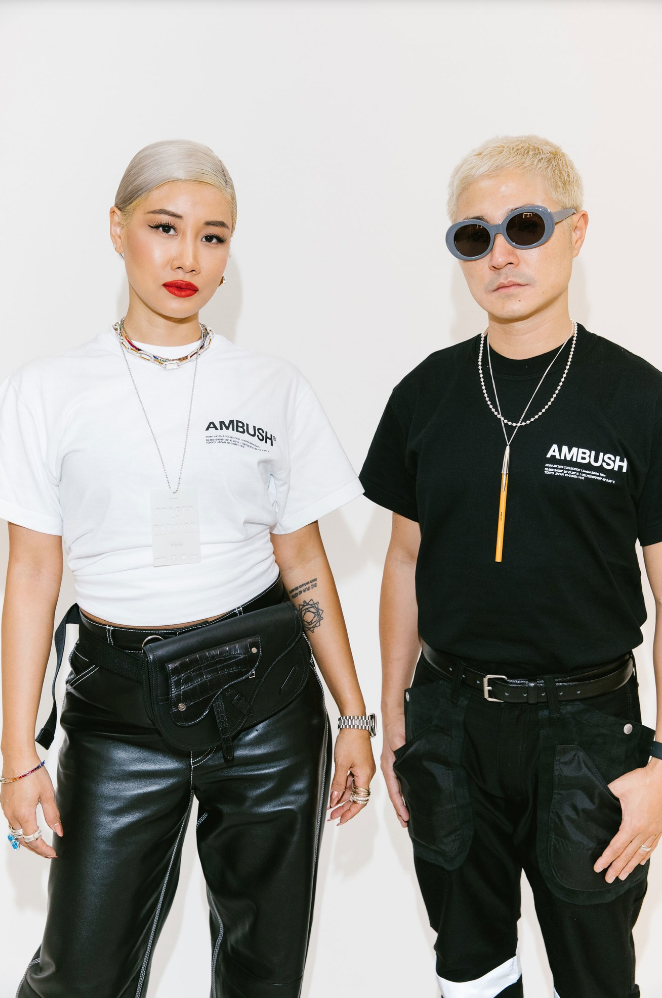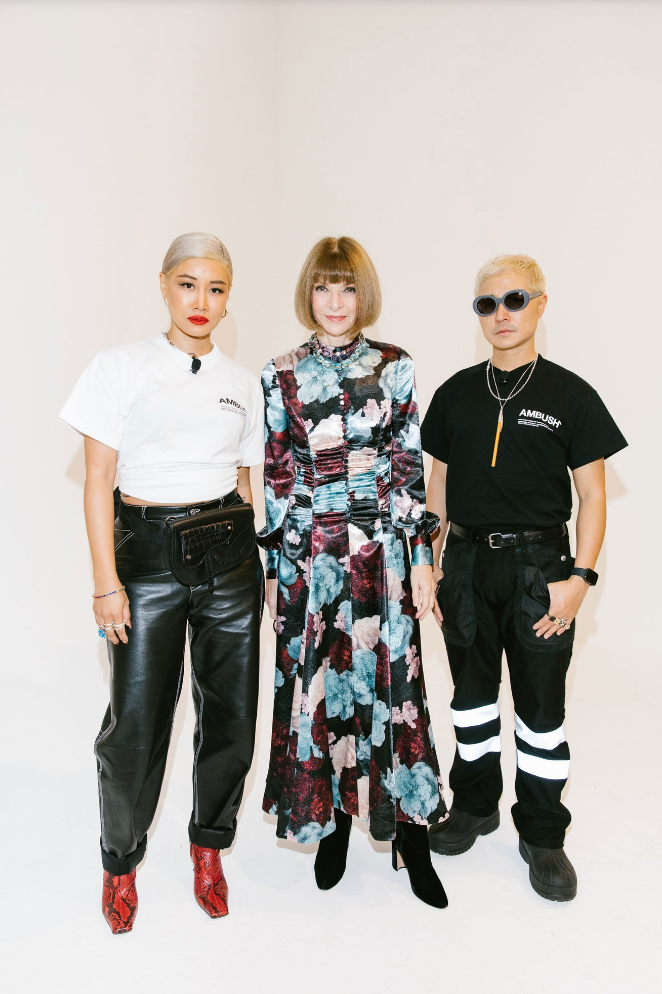A Runway That Reflects Our World: How 4 Brands Are Bringing Fashion to Life
There’s nothing typical about Gypsy Sport, Ambush, Y/Project, and Martine Rose. Each of these brands is not only helmed by young talents with a knack for disruption—Rio Uribe at Gypsy Sport, Verbal and Yoon at Ambush, Glenn Martens at Y/Project, and the eponymous Martine Rose—but they have found innovative ways to express a sense of the cultural, contemporary, and communal.
At a typical Gypsy Sport New York Fashion Week affair, you can find pregnant mothers and young drag queens modeling Uribe’s craft-couture pieces. Tokyo-based Verbal and Yoon have bridged the gap between street culture and the hallowed halls of Parisian fashion with Ambush, which turns staid luxury tropes on their heads. At Y/Project, nothing is too weird for Martens, from thigh-high Uggs to mashed-up velvet suiting—all of which reflects the way his friends are dressing now. And then there’s Rose, who took her London Fashion Week show this season to a cul-de-sac in St. Leonards Square, where street-cast models captivated homeowners who watched from their windows.
Street Casting Is a Must
From his first rogue show in New York’s Washington Square Park, Uribe has been adamant about casting his friends and collaborators in his events. “I wanted to express fashion, and I wanted to show body types and skin tones that are not often celebrated, so I got all my friends together and was like, ‘Hey I’m starting a fashion line and having a fashion show by the park,’” he told Nnadi. “It’s always about the people, for me. It’s about bringing people into the circle.”
Rose echoed that sentiment, explaining that her recent menswear show was entirely comprised of men from the neighborhood she held it in. “All of the cast for that particular show were local boys from the area, some of the residents had their grandsons [in the show] . . . I really identified with that feeling of community.”
For Martens, who has been leading the wave of diversity at Y/Project, it’s the person in the clothes that matters most. “We do a lot of street casting, especially for menswear. For me, it’s really because we try to create diversity on the catwalk in a way that every single look is a different person. We really have to fall in love with a model, it doesn’t matter where the model comes from,” he said.
There Are Benefits to Being an Outsider
Yoon recently joined Dior as a director of jewellery and accessories for its menswear lines—but she admits that the differences between an iconic maison and her own brand, run with her husband, weren’t all that great. “We’ve always been the outsiders, everything was self-taught. The way we grew as a business wasn’t the way that a lot of people have gotten into those big houses, so to be honest, I didn’t know what to expect,” she began. “Once I went in and I realised that everything that I learned—starting the business from nothing and getting involved in every aspect of it—it’s the same principles. And I had so much that I could contribute to this big house that they didn’t realise. That’s the reality that we’re talking about.” She went on to explain that her from-the-ground-up mentality at Ambush—she is closely involved in the marketing, public relations, production, and sales of her brand—gave her an advantage when stepping into the Dior ateliers.
Don’t Get Hung Up on Catchphrases Such as Streetwear or Hypebeast
Streetwear as a catchall fashion term? “It just seems really dated, it feels like an outdated description of something that you can’t just describe very one-dimensionally,” said Rose. “There are so many other things that streetwear encompasses, it just feels too reductive. I think there’s a new and different attitude that has given fashion a new life, but it’s more complex than just streetwear.”
Yoon was quick to note that the idea of street fashion is far from new, name-checking the hippies, punks, and rebels of the ’80s. “Streetwear is nothing new. Every decade has its own—usually what’s happening in the society in the political sense, that’s what gets reflected in the street, and they manifest those ideas through what they wear.”
For Martens, the hypebeast economy of “more more more fashion” is antithetical to his vision at Y/Project—even if it’s a rethink of the fashion model. “When you’re too hyped, you burn yourself out,” he said. “The moment we sell too many denims, the next season we’re not going to have any denims anymore.”
Sustainability Is Cool
“Sustainability was not something at the top of my mind when I started designing, but as I made collections more and more often, I would have inventory that I was sitting on that nobody was buying and so many samples that never got to see the runway,” said Uribe. “I hated having that much waste in my life.” Since then, he repositioned his business to a made-to-order model. “What I’m trying to do is make it cool to be sustainable and actually appreciate slow fashion.”
Copying Can Be Flattering—When It’s Done Right
“It depends by whom and in what sort of context,” began Rose, on the issue of the rampant plagiarism in fashion. “When it’s students, it’s deeply flattering to me, to be honest. It’s resonating with people. Everyone is inspired, I was inspired by designers. There’s nothing wrong with it, and it’s an honor to be inspiring the next generation of people. It’s very different when it’s done by a big corporation or someone who’s making a lot of money.”
Uribe agreed. “When a corporation does it, it feels like rape. We made things that were sustainable . . . and right after the show, they have versions at [high-street stores].”
See the full article by Steff Yotka HERE






